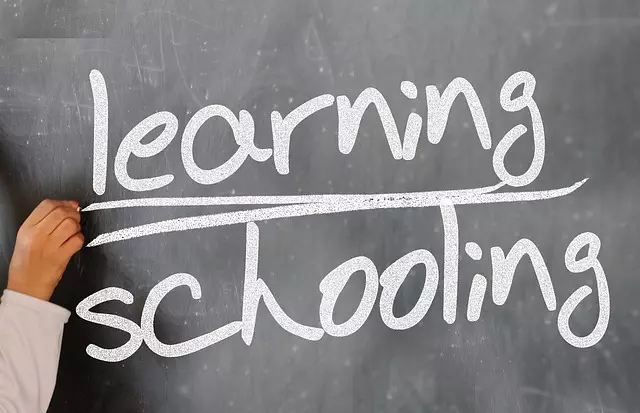Implementing structured data training through video schema is crucial for efficient machine interpretation of visual information, enhancing tasks like automatic captioning and object recognition. This approach benefits users with improved content discoverability and creators by increasing audience reach and engagement. A strategic combination of semantic relevance and appropriate markup tools ensures accurate metadata, boosting search engine optimization (SEO) and website visibility. Success depends on comprehensive training data, advanced machine learning, and collaboration between teams. Future prospects include enhanced video analysis accuracy, improved multimedia experiences, and informed industry decisions through AI/machine learning integration.
Video Schema Implementation is a game-changer in leveraging structured data training for video content. This article delves into the intricacies of video schema, exploring its foundational role in organizing vast amounts of multimedia data. We examine why implementing video schema is crucial, highlighting benefits and challenges, and offering practical steps for successful integration. From choosing the right tools to enhancing search and discovery, this comprehensive guide covers key aspects, supported by real-world case studies, to help you navigate the landscape of video schema adoption and its future trends in AI and machine learning.
Understanding Video Schema: The Foundation of Structured Data Training

Understanding Video Schema is paramount in the realm of structured data training, serving as the foundation upon which efficient and accurate information extraction from video content is built. A video schema meticulously outlines the various elements that comprise a video, such as shots, scenes, objects, and actions, providing a structured framework for machines to interpret and understand visual data.
By defining these components, a video schema enables intelligent systems to organize and categorize video footage coherently. This structured approach facilitates tasks like automatic captioning, object recognition, and event analysis, thereby enhancing the capabilities of machine learning models engaged in Structured Data Training.
Why Implement Video Schema? Benefits and Challenges

Implementing a video schema offers a structured approach to organizing and presenting video content, enhancing both user experience and search engine optimization (SEO). By marking up videos with relevant metadata using Structured Data Training, platforms can provide search engines with critical information about each clip, such as its duration, topic, and key points. This enables better indexing and visibility in video search results, making it easier for potential viewers to discover content that aligns with their interests.
While the benefits are significant, implementing video schema comes with its challenges. It requires careful consideration of the types of metadata to include, ensuring accuracy and relevance. Additionally, maintaining consistent formatting across a library of videos can be time-consuming. However, the structured data gained from this process improves content discoverability, ultimately benefiting creators by increasing their audience reach and engagement.
Key Components of a Successful Video Schema Implementation

Implementing a successful video schema requires a strategic approach, combining key components that enhance both user experience and search engine optimization (SEO). Firstly, structured data training is paramount. This involves teaching machines to interpret and organize video content using standardized formats, ensuring metadata is rich and accurate. By leveraging structured data, search engines can better understand the context, duration, and topics within each video, leading to improved indexing and visibility in search results.
Additionally, a robust schema implementation should prioritize semantic relevance. This means organizing video content around meaningful categories, tags, and descriptions that accurately represent its subject matter. Such meticulous tagging not only aids search engines but also guides viewers towards relevant videos, fostering better engagement within the platform.
Choosing the Right Tools for Video Schema Markup

Choosing the right tools for video schema markup is a critical step in enhancing your website’s search engine optimization (SEO) potential. With structured data training, you can ensure that your video content is properly categorized and presented to search engines. Look for tools that offer intuitive interfaces and support for various video formats, allowing you to easily add relevant metadata such as titles, descriptions, and categories.
These tools should also integrate seamlessly with popular Content Management Systems (CMS) like WordPress or Drupal, streamlining the process of implementing schema markup. Additionally, consider solutions that provide real-time validation and testing capabilities, enabling you to catch and correct any errors before they impact your website’s visibility on search engine result pages (SERPs).
Steps to Effectively Train Models for Video Content Analysis

Training models for video content analysis involves a structured data approach that leverages large-scale datasets and advanced machine learning techniques. The initial step is to gather diverse and representative video clips across various categories, ensuring a balanced distribution of different scenes, objects, and actions. This dataset should be meticulously annotated, labeling key frames or segments with relevant information such as objects present, their locations, and actions occurring.
Once labeled, the data is split into training, validation, and test sets. The model architecture, whether it’s a convolutional neural network (CNN) for visual features or a transformer for temporal dependencies, is chosen based on the task at hand. During training, the model learns from the structured data, optimizing its parameters to accurately predict the desired labels. Regular evaluation on the validation set helps in tuning hyperparameters and avoiding overfitting while ensuring the model generalizes well to unseen data.
Enhancing Search and Discovery with Video Schema

Video content is becoming increasingly prevalent online, making it essential for platforms and search engines to catch up with this evolving landscape. This is where Video Schema Implementation steps in as a game-changer. By using structured data training techniques, video schemas enable enhanced search and discovery functionality. These schemas provide valuable metadata about videos, including titles, descriptions, tags, and more, allowing search algorithms to understand the content better.
With video schemas, users can quickly find relevant videos based on specific criteria, such as topic, genre, or even visual elements. For instance, a user searching for “how-to paint a landscape” benefits from structured data that highlights videos with this exact title and description, ensuring they discover the most accurate results. This not only improves user experience but also encourages engagement and retention on video-sharing platforms.
Case Studies: Real-World Examples of Video Schema Success

In the realm of video content management, structured data training has proven to be a game-changer. Case studies from various industries highlight the success of implementing video schemas, showcasing how this approach enhances content organization and accessibility. For instance, a leading streaming platform utilized structured data training to categorize and tag its vast library of videos, allowing users to discover content more efficiently. By implementing a robust video schema, they improved search accuracy, resulting in higher user satisfaction and increased engagement.
Another compelling example comes from an educational institution that adopted a similar strategy. They applied structured data to their online video tutorials, making it easier for students to find relevant material. This not only streamlined the learning process but also provided valuable insights into content popularity and student preferences through detailed analytics. Such real-world applications demonstrate the significant benefits of integrating video schemas and structured data training, transforming chaos into order in the digital landscape.
Overcoming Common Obstacles in Video Schema Adoption

Implementing video schema can be a complex process, often hindered by several common obstacles. One of the primary challenges is the lack of structured data training. Many organizations struggle with inconsistent data formats and annotations, making it difficult to teach machines how to interpret video content accurately. This issue compounds when dealing with diverse video libraries, where varying quality, lighting conditions, and languages create additional complexities.
Overcoming these obstacles requires a strategic approach. Investing in comprehensive structured data training, including meticulous annotation and standardized protocols, is crucial for successful schema adoption. Additionally, leveraging advanced machine learning techniques that can adapt to variations in video quality and content can significantly enhance accuracy. Organizations should also consider fostering collaboration between IT teams, content creators, and language experts to ensure a unified and well-structured approach to video data management.
Future Trends: Evolution of Video Schema in AI and Machine Learning

As AI and machine learning continue to evolve, the future trends in video schema implementation promise exciting advancements. The integration of structured data training will play a pivotal role in enhancing the accuracy and efficiency of video analysis. By leveraging sophisticated algorithms and deep learning techniques, these systems can better understand and interpret visual content, enabling more nuanced and contextually aware decision-making.
This evolution will not only streamline various industries’ workflows but also open up new possibilities for creativity and innovation. From improved object recognition and scene understanding to enhanced natural language processing for video captions and descriptions, the future of video schema implementation looks set to revolutionize multimedia interactions, making them more accessible, intelligent, and immersive.
